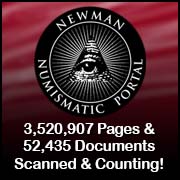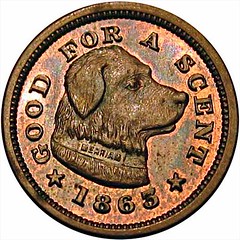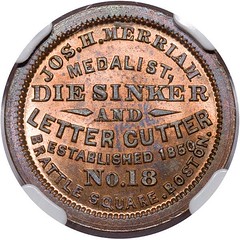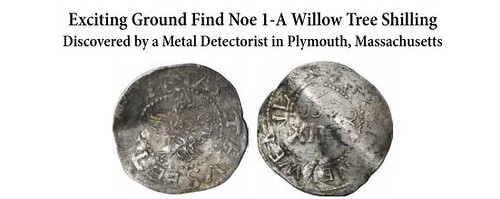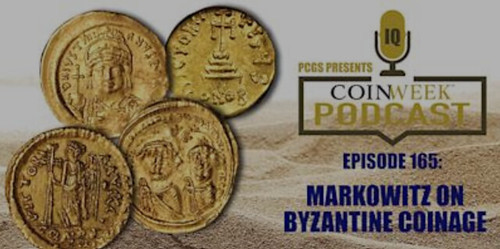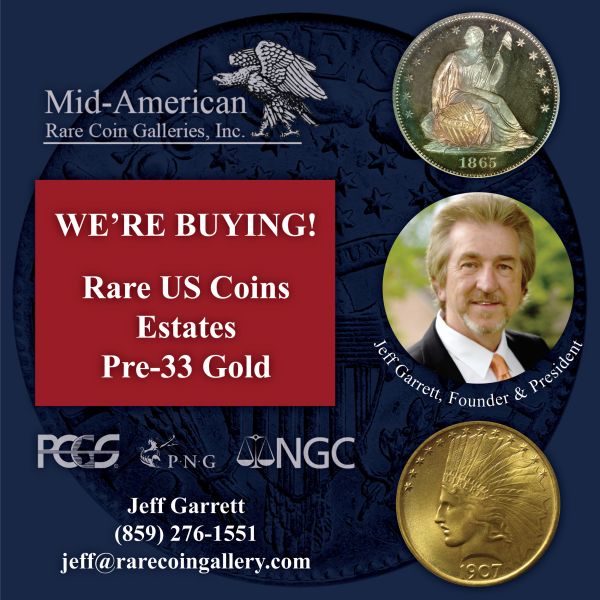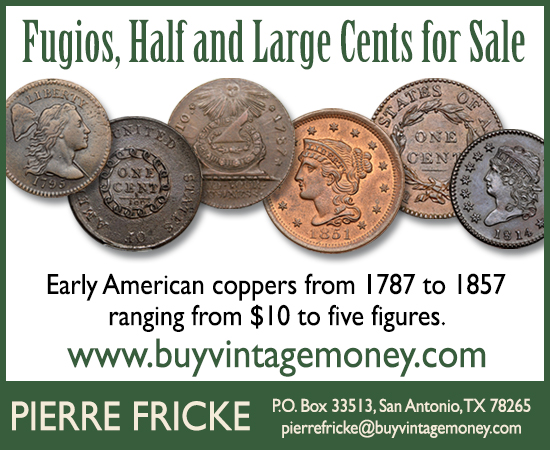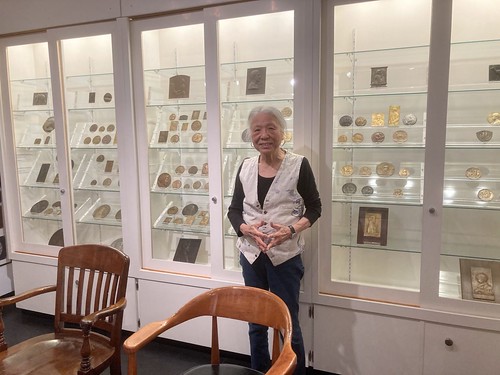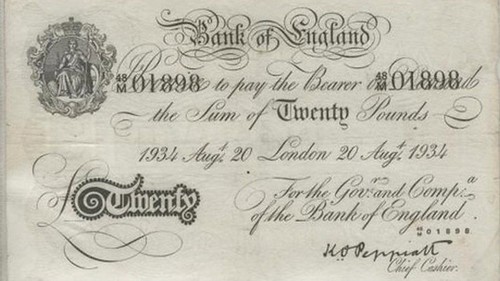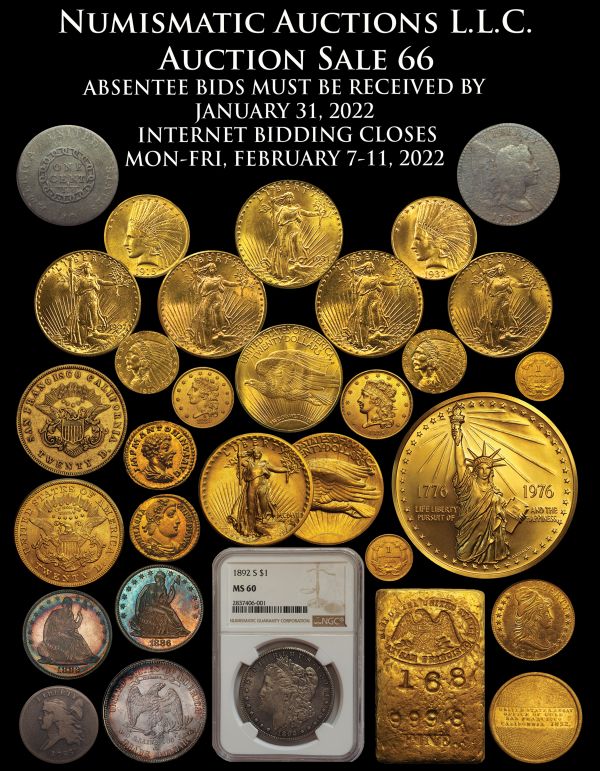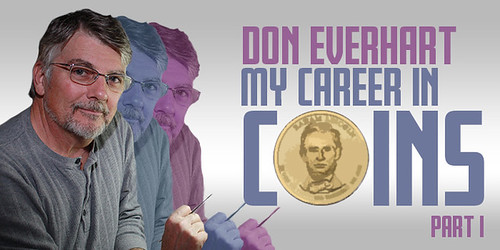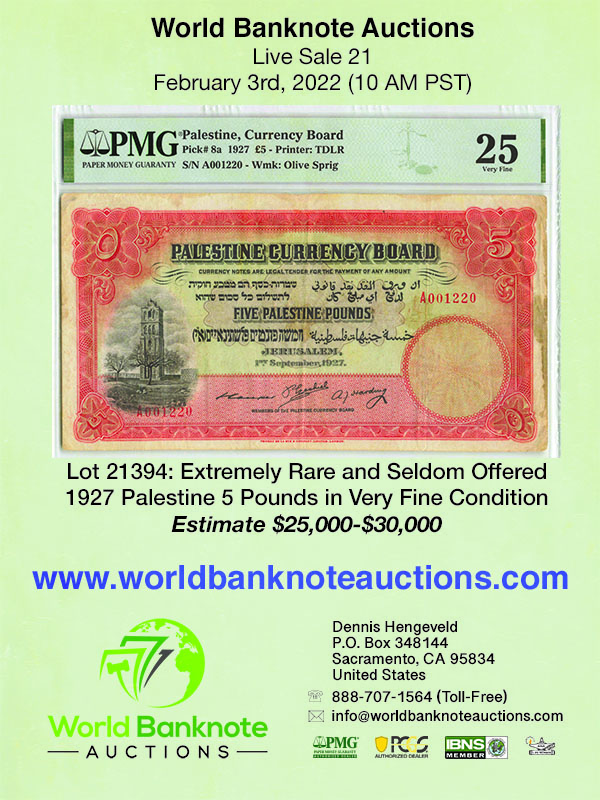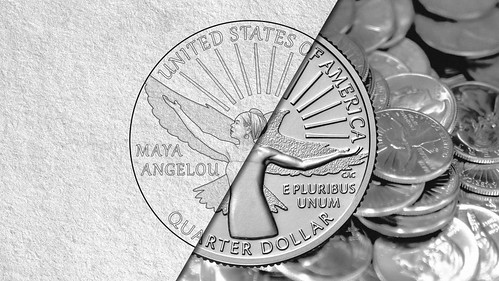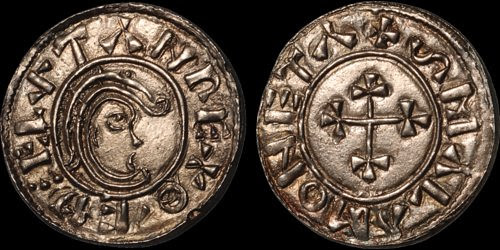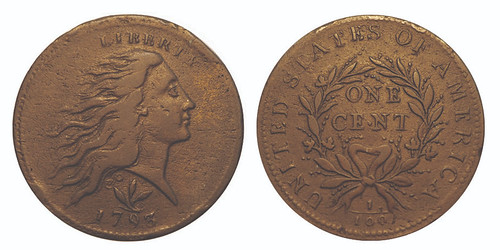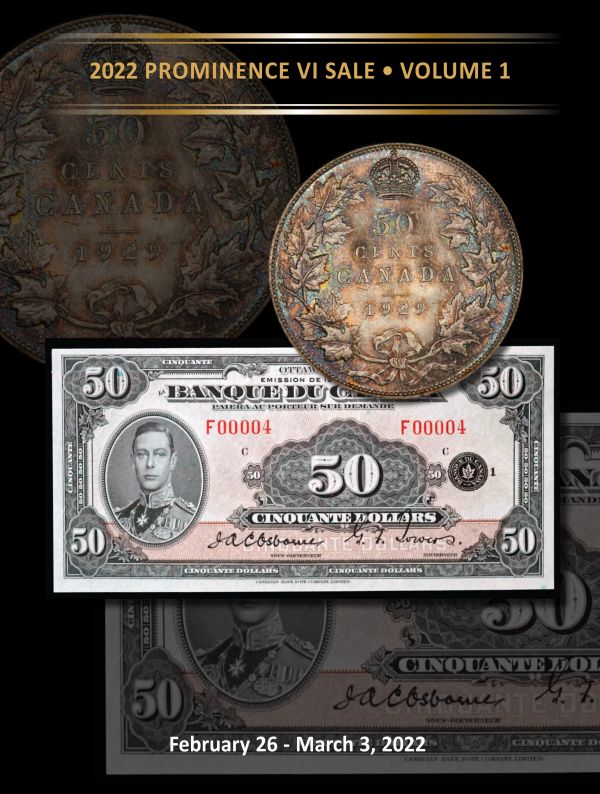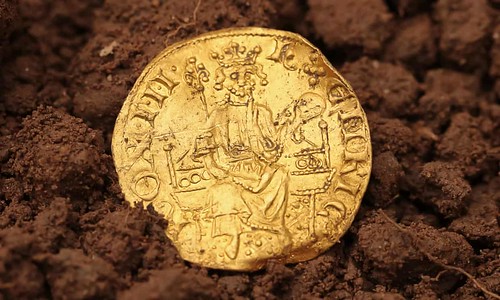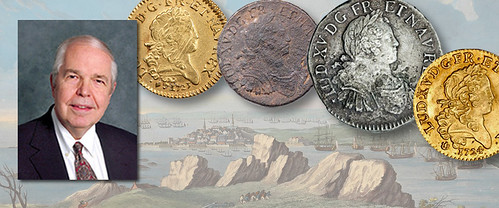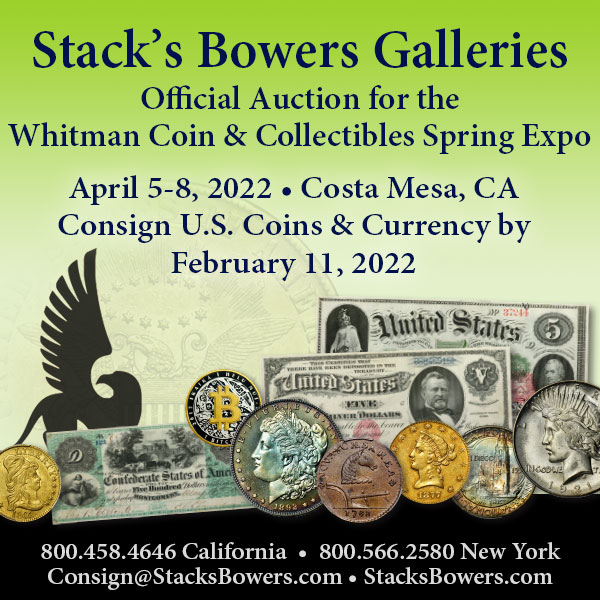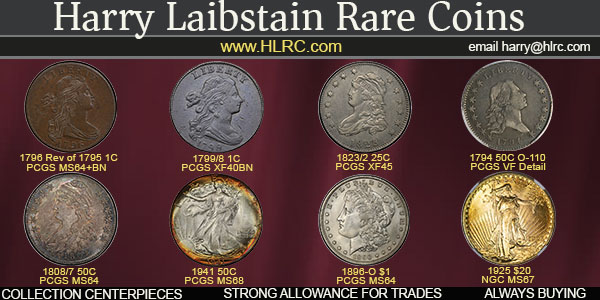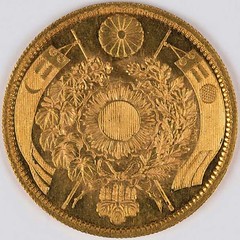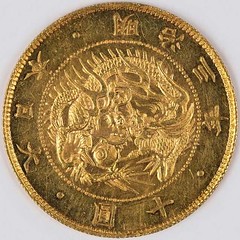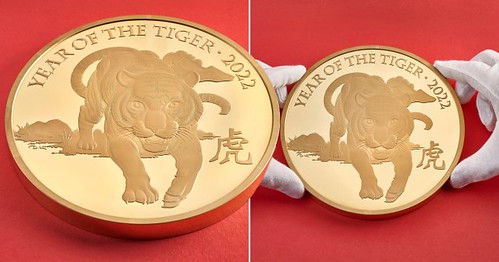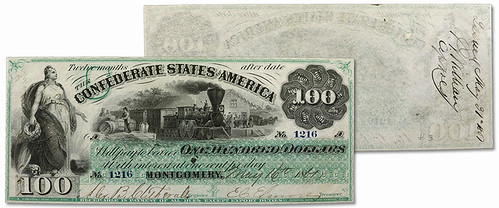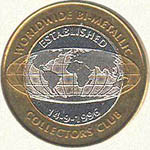
Visit our NBS Sponsors


About UsThe Numismatic Bibliomania Society is a non-profit association devoted to the study and enjoyment of numismatic literature. For more information please see our web site at coinbooks.org SubscriptionsThose wishing to become new E-Sylum subscribers (or wishing to Unsubscribe) can go to the following web page link MembershipThere is a membership application available on the web site Membership Application To join, print the application and return it with your check to the address printed on the application. Print/Digital membership is $40 to addresses in the U.S., and $60 elsewhere. A digital-only membership is available for $25. For those without web access, write to: Charles Heck, Treasurer AsylumFor Asylum mailing address changes and other membership questions, contact Chuck at this email address: treasurer@coinbooks.org SubmissionsTo submit items for publication in The E-Sylum, write to the Editor at this address: whomren@gmail.com BUY THE BOOK BEFORE THE COINSale CalendarWatch here for updates! |
- WAYNE'S WORDS: THE E-SYLUM JANUARY 30, 2022
- NBS BIBLIOTALK PODCAST WITH COLE HENDRICKSON
- NEW BOOK: BIBLE LORE AND THE ETERNAL FLAME
- NEW BOOK: MEXICO CITY COINAGE VARIETY GUIDE
- NEW BOOK: FOUR MAINZ ENGRAVERS
- PERIODICAL: COLONIAL LATIN AMERICAN REVIEW
- C4 AUCTION SALE CATALOGS ON NEWMAN PORTAL
- U.S. MINT REPORTS WANTED
- AUDIO: MIKE MARKOWITZ ON BYZANTINE COINS
- AN OPA RATION TOKEN HOLDER
- PRINTING BLOCKS FOR COLONIAL AMERICAN COINS
- NOTES FROM E-SYLUM READERS: JANUARY 30, 2022
- MEDIALIA GALLERY CLOSING
- LEEDS MUSEUM EXHIBIT ON EVOLUTION OF MONEY
- MONEY ZOO: ANIMALS IN THE HISTORY OF MONEY
- VOCABULARY TERM: HIGH POINT
- DON EVERHART'S CAREER IN COINS, PART 1
- MORE ON DESIGNING THE MAYA ANGELOU QUARTER
- BRITISH STANDARD CATALOG PLATE COINS
- NUMISMATIC AUCTIONS SALE 66 SELECTIONS
- THE TCNC PROMINENCE VI SALE
- GADOURY ANNOUNCES FERNAND DAVID SALE
- MORE ON FINDING THE HENRY III GOLD PENNY
- COINS OF THE LE CHAMEAU
- COINS OF GERMANY'S 1849 FALSE START
- JAPANESE MEIJI PATTERN COIN DISCOVERED
- ROYAL MINT YEAR OF THE TIGER GOLD COIN
- HIGH GRADE CONFEDERATE MONTGOMERY NOTE
- COIN COLLECTING MAKING A COMEBACK
- HOW TRUMP COINS BECAME INTERNET SENSATION
- LOOSE CHANGE: JANUARY 30, 2022
- FEATURED WEB SITE: WORLDWIDE BI-METALLIC COLLECTORS CLUB
Click here to read the thin version on the web
Click here to subscribe
Click here to access the complete archive
To comment or submit articles, reply to whomren@gmail.com
Content presented in The E-Sylum is not necessarily researched or independently fact-checked, and views expressed do not necessarily represent those of the Numismatic Bibliomania Society.
WAYNE'S WORDS: THE E-SYLUM JANUARY 30, 2022
 New subscribers this week include:
Daniel McKone.
Welcome aboard! We now have 6,740 subscribers.
New subscribers this week include:
Daniel McKone.
Welcome aboard! We now have 6,740 subscribers.
Thank you for reading The E-Sylum. If you enjoy it, please send me the email addresses of friends you think may enjoy it as well and I'll send them a subscription. Contact me at whomren@gmail.com anytime regarding your subscription, or questions, comments or suggestions about our content.
This week we open with a new NBS podcast, three new books, a special periodical issue, updates from the Newman Numismatic Portal, and more.
Other topics this week include Bible coins, the mining and minting history of the Americas, Byzantine coins, OPA ration tokens, the Money Zoo, Mashiko, Don Everhart, auction previews, the Royal Mint year of the Tiger gold coin, and Trump coins and the fake account that shared a fake story on a fake Fox News website about a fake tweet by a fake Elon Musk.
To learn more about Civil War tokens, coinage of the Mexico City Mint, the Fernand David collection of American coins, Medialia Rack and Hamper Gallery, shears for clipping half crowns, the Feuchtwanger Three Cent piece, Canadian paper money, coin collecting's comeback, the Numismatic Tooth Fairy, and the woman who ate $550, read on. Have a great week, everyone!
Wayne Homren
Editor, The E-Sylum
NBS BIBLIOTALK PODCAST WITH COLE HENDRICKSON
The latest episode of the Numismatic Bibliomania Society podcast is now available for listening. It's on the NBS web site but also available elsewhere. Vice-President/Secretary Len Augsburger provided this report. -Editor
NBS Podcast Civil War Tokens, with Cole Hendrickson
NEW BOOK: BIBLE LORE AND THE ETERNAL FLAME
Whitman is publishing a new book by Ken Bressett on Biblical coins! Here's the press release. -Editor
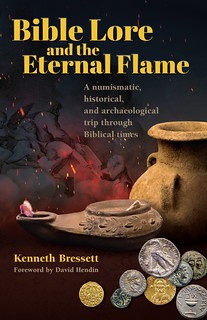 Whitman Publishing announces the upcoming release of Bible Lore and
the Eternal Flame, by Kenneth Bressett. The new 224-page hardcover book will debut in March 2022, available from booksellers and hobby shops nationwide. In the meantime, it can be preordered at
www.Whitman.com and online bookstores.
Whitman Publishing announces the upcoming release of Bible Lore and
the Eternal Flame, by Kenneth Bressett. The new 224-page hardcover book will debut in March 2022, available from booksellers and hobby shops nationwide. In the meantime, it can be preordered at
www.Whitman.com and online bookstores.
Author Ken Bressett is well known to the collecting community as an expert on American coinage. Active in numismatics since the 1940s, he has written many articles and is author or editor of more than two dozen related books.
Although he is most famous as Editor Emeritus of the Guide Book of United States Coins (popularly called the Red Book
), Bressett is also a longtime student of the ancient world. He is editor of the Handbook of Ancient Greek and Roman Coins (1994), a popular reference that builds on the work of Zander H. Klawans. His Money of the Bible was first published in 2005 and subsequently updated in new editions. And his book Milestone Coins: A Pageant of the World's Most Significant and Popular Money has chapters on the ancient world and Biblical currency.
NEW BOOK: MEXICO CITY COINAGE VARIETY GUIDE
Author Brad Yonaka shared this press release for his new book on Mexico City Mint coinage. Thanks! -Editor
A Variety Guide to the Silver and Copper Coinage of the Mexico City Mint 1732-1771
by Brad Yonaka
ISBN-13: 978-0-9986825-4-9
322 pp. | 8 ½ x 11 inch hardbound with dust cover, black & white interior
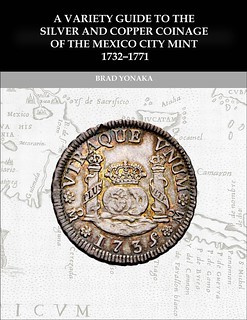 This book, self-published in late 2021 but delayed in printing, is dedicated exclusively to all
denominations and dates of milled pillar coinage of this mint, in as much detail as has ever
been presented. It includes all the information from my 2017 title A Variety Guide to the
Fractional Pillar Coinage of Mexico City 1732-1771, with a significantly larger database (now
over 12,000 coins), and now includes the 8 Reales denomination. A great deal of fragmentary
historical research is synthesized to present a current accounting of types, with rarity and
estimated prices. Included are descriptions of 573 dates and varieties, with close to 600 photos.
This guide also brings together, in one volume, many facets of both the history leading up to
the first strikes, and the details behind the major design changes seen during the forty years of
issue.
This book, self-published in late 2021 but delayed in printing, is dedicated exclusively to all
denominations and dates of milled pillar coinage of this mint, in as much detail as has ever
been presented. It includes all the information from my 2017 title A Variety Guide to the
Fractional Pillar Coinage of Mexico City 1732-1771, with a significantly larger database (now
over 12,000 coins), and now includes the 8 Reales denomination. A great deal of fragmentary
historical research is synthesized to present a current accounting of types, with rarity and
estimated prices. Included are descriptions of 573 dates and varieties, with close to 600 photos.
This guide also brings together, in one volume, many facets of both the history leading up to
the first strikes, and the details behind the major design changes seen during the forty years of
issue.
NEW BOOK: FOUR MAINZ ENGRAVERS
Battenberg Verlag has published a new about four key engravers/medalists from the city of Mainz, Germany. Here's a Google-translated description from the publisher's website. -Editor
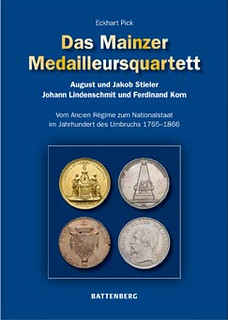 The Mainz Medalist Quartet
The Mainz Medalist Quartet
August and Jakob Stieler, Johann Lindenschmit and Ferdinand Korn
One knows mint masters, Wardeine, but usually not the medalists, the designers of the coins and medals. Four medalists come from Mainz and have also worked for numerous mints. Her other stations were Wiesbaden, Darmstadt, Koblenz, Limburg, Arolsen and Bern. While August and Jakob Stieler, father and son, as well as Johann Lindenschmit came from well-known artistic families, Ferdinand Korn became the most famous mint director and medalist. The wildest rumors were circulating about him.
PERIODICAL: COLONIAL LATIN AMERICAN REVIEW
Mitch Fraas passed along a link to a new issue of the Colonial Latin American Review focusing on the mining and minting history of the Americas. Thanks! Here's an excerpt from the Introduction. -Editor
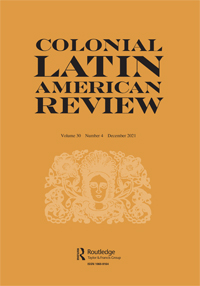 This special issue spans the sixteenth to nineteenth centuries to reconsider the cultural and economic impact of mining and coin production in the early Americas. The geographic scope of the articles—the Spanish viceroyalties of New Spain and Peru and the British Caribbean—underscores the hemispheric circulation of mining and minting knowledge and the movement of coins. The authors primarily present regional case studies but taken together these essays present a trans-imperial perspective on the significance of mining and minting in the Americas, specifically silver, the most heavily trafficked precious metal in the early modern period. This hemispheric scope highlights similarities in the ways Indigenous people, colonists, forced migrants, and others accorded cultural and economic value to silver at different moments of its life cycle. The broad reach prioritizes formerly ignored topics and perspectives, ranging from that of African-descended men who labored in the mint at Potosí, to those of women from India who made jewelry from their silver coin wages.
This special issue spans the sixteenth to nineteenth centuries to reconsider the cultural and economic impact of mining and coin production in the early Americas. The geographic scope of the articles—the Spanish viceroyalties of New Spain and Peru and the British Caribbean—underscores the hemispheric circulation of mining and minting knowledge and the movement of coins. The authors primarily present regional case studies but taken together these essays present a trans-imperial perspective on the significance of mining and minting in the Americas, specifically silver, the most heavily trafficked precious metal in the early modern period. This hemispheric scope highlights similarities in the ways Indigenous people, colonists, forced migrants, and others accorded cultural and economic value to silver at different moments of its life cycle. The broad reach prioritizes formerly ignored topics and perspectives, ranging from that of African-descended men who labored in the mint at Potosí, to those of women from India who made jewelry from their silver coin wages.
C4 AUCTION SALE CATALOGS ON NEWMAN PORTAL
The latest additions to the Newman Numismatic Portal are auction sale catalogs from the Colonial Coin Collectors Club. Project Coordinator Len Augsburger provided the following report. -Editor
U.S. MINT REPORTS WANTED
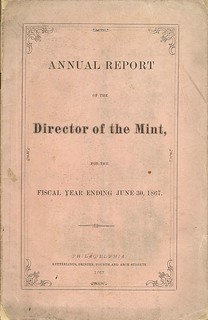
The Newman Portal has an amazing cache of content, but there are always holes needing to be filled. This week I helped Len locate a copy of the 1894 Mint report, which was incorporated into the Secretary of the Treasury report for that year. Other Mint Reports missing from NNP include the years 1958, 1959, 1973, 1980, 1981, 1985-1987, 1989, 1991-1994, 1997, 1999, and 2000. Can anyone help? Do you have any of these in your library, or know where a copy can be found online? Thanks. -Editor
To access U.S. Mint Reports on the Newman Portal, see:
U.S. Mint Reports
(https://nnp.wustl.edu/library/publisherdetail/51)
AUDIO: MIKE MARKOWITZ ON BYZANTINE COINS
A recent CoinWeek Podcast features Mike Markowitz discussing Byzantine coins. Give it a listen! He knows the subject well. -Editor
This week on the CoinWeek Podcast, Mike Markowitz sits down to discuss his favorite area of ancient coin collecting: Byzantine coins. The Byzantine Empire stood for more than a thousand years, officially ending on May 29, 1453, when the city of Constantinople fell to the Ottomans. Historians call it the Byzantine
Empire, but they called themselves Romans
.
AN OPA RATION TOKEN HOLDER
In earlier issues we've discussed all manner of coin collecting boards with the help of author and researcher Dave Lange. Last week's MPC Gram (Series 23 No. 2508) featured a note from Roger Urce discussing one we hadn't seen before - a Capitol Plastics style holder for WWII U.S. ration tokens issued by the Office of Price Administration (OPA). With permission, we're republishing it here. Thanks! See the earlier E-Sylum article for other types of OPA token boards. -Editor
PRINTING BLOCKS FOR COLONIAL AMERICAN COINS
Jeff Rock submitted this item about his interesting collection of printing blocks picturing U.S. colonial coins. Thanks! -Editor
One of the cool "weird" things I have in my collection is a selection of printing blocks for colonial American coins - and since the image shared by Jesse Kraft was for such a piece, it piqued my interest. I have perhaps three dozen blocks, and they are of varying ages and construction. These are the subject of an article I someday will get around to writing, but doesn't hurt to share some of them here and ask for assistance too!
NOTES FROM E-SYLUM READERS: JANUARY 30, 2022
J. Schulman Sales of Fernand David American Collection
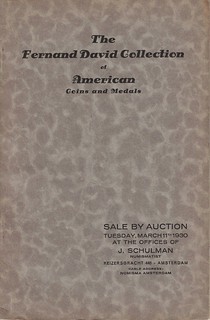 Scott Miller writes:
Scott Miller writes:
"I was pleased to see the notice concerning the upcoming Fernand David sale. Until now, there was virtually nothing known about him. There were at least two previous J. Schulman sales with material from his collection. The first, held on March 11, 1930, consisted of American coins and medals, and included a number of rarities, such as a cased proof set of 1843, half cent through gold eagle (lot 112), and a New Yorke in America token (lot 63).
According to the catalogue, the second part, "will include the European and Oriental series with the exception of the Ancients and the French". That appears to have taken place on June 8, 1931; a copy was listed in Kolbe's "The Numismatic Bookseller", Vol. 3, Nos. 5 and 6, Spring 1987."
Scott kindly attached a scan of the cover of the catalogue. Thanks! -Editor
To read the earlier E-Sylum article, see:
FERNAND DAVID (1861-1927)
(https://www.coinbooks.org/v25/esylum_v25n04a19.html)
Other topics this week include a Mystery Rat Man Medal. -Editor
THE BOOK BAZARRE
MEDIALIA GALLERY CLOSING
Peter Van Alfen of the American Numismatic Society published an ANS Pocket Change blog article on his recent visit to Mashiko's Medialia Rack and Hamper Gallery, which "has for nearly three decades served as a forum for contemporary medallic art, perhaps the only such gallery anywhere in the world." The gallery is closing as artist Mashiko semi-retires. -Editor
Founded in 1993 by Mashiko, the 2019 winner of the ANS's prestigious J. Sanford Saltus Award for Achievement in Medallic Art, Medialia has functioned not just as a gallery, but as an important meeting place for artists, connoisseurs, students, and those curious in hand-held sculpture generally. Since its inception Medialia has hosted scores of exhibits featuring the work of living artists, including current Saltus Award winners, as well as thematic retrospective exhibits, often shown concurrently, that have explored the long history of medallic art, its various guises and purposes, thus offering viewers the means for understanding where medallic art has come from and where it might be going. Like all contemporary art, this can sometimes be a contentious issue, but Medialia has always provided a cheerful, warm, and engaging environment for serious discussion.
LEEDS MUSEUM EXHIBIT ON EVOLUTION OF MONEY
This BBC News article features the Leeds Museum's exhibit on the evolution of money. The exhibit runs through February 11. -Editor
Kat Baxter, curator of the exhibition at Leeds Museum looking at the evolution of money, said: "The Nazis counterfeited Bank of England notes from branches in Bristol, Birmingham, Leeds, Liverpool and Manchester.
"Banknotes had their own serial numbers. The Leeds branch serial number started with 138Vm and this was used on the fake notes."
MONEY ZOO: ANIMALS IN THE HISTORY OF MONEY
The Nickle Numismatic Collection at the University of Calgary has mounted an exhibit on the historical use of animals as money and animals portrayed on money itself. It runs until May 27, 2022. -Editor
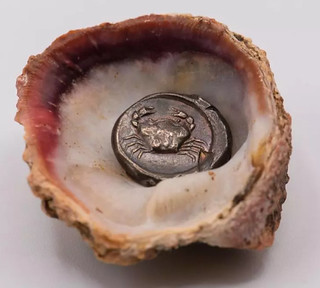 The new exhibition at Nickle Galleries, Money Zoo: Fantastic Beasts in the History of Money, highlights the importance of animals in the human world. Our link with natural creatures is timeless and enduring.
The new exhibition at Nickle Galleries, Money Zoo: Fantastic Beasts in the History of Money, highlights the importance of animals in the human world. Our link with natural creatures is timeless and enduring.
What is this intricate relationship, the sacred connection between humans and animals? What kind of evidence do we have from money and trade? Trying to answer these questions, the exhibition highlights the examples of the historical use of animals as money as well as animals portrayed on our past and present currencies.
VOCABULARY TERM: HIGH POINT
Here's another entry from Dick Johnson's Encyclopedia of Coin and Medal Terminology. -Editor
High Point. The point of highest relief on a numismatic or medallic item. The high point – often the nose on a portrait – is formed from the lowest point of the die cavity. Examining the high point in the press room during striking is necessary for both medals and coins; it is the critical point which determines whether a medal is fully struck up in multiple striking, or for a coin during set up. High points are examined in the finishing department as well; as medals are oxidized and relieved they are examined to insure the high point is not overly buffed.
DON EVERHART'S CAREER IN COINS, PART 1
With permission, we're republishing excerpts of former U.S. Mint Sculptor-Engraver Don Everhart series published by CoinWeek beginning in April 2018. -Editor
Fresh out of college in 1973, I made a decision that would change the course of my life forever – and I didn't even know it at the time!
Back then I was more concerned about staying alive than deciding what my career path would be. I had a Bachelors Degree in Fine Arts Painting, and my vague plan was to be an illustrator (doing album covers, I hoped).
I had taken a job as a paste-up artist at a ticket and label manufacturing company in Northeast Philadelphia and had moved five times in the past year, so things were a little unsettled, to say the least.
MORE ON DESIGNING THE MAYA ANGELOU QUARTER
A new article from Fast Company adds more background on how Emily Damstra designed the Maya Angelou quarter. Here's an excerpt - see the complete article online. -Editor
Maya Angelou's and the other upcoming quarters were authorized by the Circulating Collectible Coin Redesign Act of 2020, and Damstra notes that they all came with a few requirements. Most notably, the reverse side (tails) couldn't feature the quintessential head and shoulder portrait or bust. So Damstra opted for a figure of Angelou instead of a close-up. And since the quarter is so small, she kept the number of details to a minimum. A career in natural science illustration has indulged my tendency to include a lot of detail in my drawings,
she says. Negative space becomes very important for providing balance.
BRITISH STANDARD CATALOG PLATE COINS
In a January 21, 2002 email to clients, dealer Allan Davisson discussed an interesting group of electrotype copies of British coins and how they were used to create plate images for the Standard Catalog of British Coins. With permission we're republishing it here. Thanks! -Editor
This all began after I pulled a small group of electrotype copies of British coins that I have been holding for decades out of the safe deposit box and began researching their history. Double-thick with clear lines around the edges showing where the two halves were fastened together, the pieces looked like a series of British Museum copies similar to the copies of the Museum's magnificent ancient coins produced in the 19th century.
NUMISMATIC AUCTIONS SALE 66 SELECTIONS
Here's a group of lots that caught my eye in the upcoming Numismatic Auctions LLC upcoming February 2022 sale #66. -Editor
Lot 46: Sharp 1793 Wreath Cent Rarity. Vine and Bars Edge. S-8, R3. VF with pleasing color and a minimal number of marks from its light use in our nations early Federal Commerce. Neat example and historic. Ex: EAC Auction. 4/4/1992.
THE BOOK BAZARRE
THE TCNC PROMINENCE VI SALE
The Canadian Numismatic Company is holding a major sale beginning in February. Here's the press release. -Editor
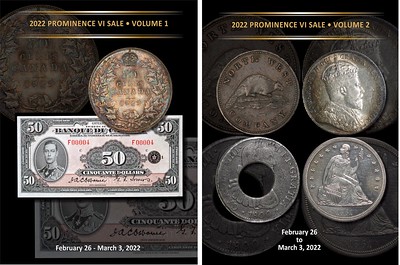 THE PROMINENCE VI SALE
THE PROMINENCE VI SALE
FEBRUARY 26 - MARCH 3, 2022
6 SESSIONS
OVER 2300 LOTS
TWO VOLUMES
VOLUME 1: SESSIONS 1 &2 LOTS 1-763
VOLUME 2: SESSIONS 3-4-5-6 LOTS 764-2313
GADOURY ANNOUNCES FERNAND DAVID SALE
Here is the press release for the March Gadoury sale of the Fernand David Collection. QUICK QUIZ: Who can spot the chronogram? -Editor
12 March 2022
Éditions Victor Gadoury and Alain Weil, Monaco
Fernand David Collection
Forgotten Collection to Enter the Market: The Fernand David Collection
Around 1900, he was one of the most important French collectors: Fernand David, whose general collection of gold coins will be auctioned on 12 March 2022 by Éditions Victor Gadoury and Alain Weil. You can expect some exciting surprises!
MORE ON FINDING THE HENRY III GOLD PENNY
Leon Saryan passed along this follow-up story from The Guardian about the rare Henry III gold penny that was recently found and sold. -Editor
A metal detectorist who gave up his hobby when he started a family, only to return to it when his children were old enough to nag him into taking them out detecting with him, has been rewarded with one of the most extraordinary finds – a fine example of England's oldest gold coin, which has sold for a record-breaking £648,000 at auction.
COINS OF THE LE CHAMEAU
In his Stack's Bowers blog article this week, Dave Bowers discusses the treasure of the Le Chameau, a French transport sunk near Nova Scotia in 1725. -Editor
During the night of August 25-26, 1725, the French 600-ton, 48-gun transport, Le Chameau, foundered in high winds on the rocks of Kelpy Cove, off Port Nova Island, Nova Scotia, Canada, just 12 miles from her destination of Fortress Louisbourg, The vessel went down taking all hands and passengers, including Guoillaume de Chazel, the newly appointed governor of Trois Rivieres and Intendant Begon's successor. ?
Salvage operations commenced from Louisbourg late in 1726, but the main gold and silver treasure the vessel carried was not recovered until 1965 when Alex Storm and his associates achieved success (although a few coins from the wreck had been found on 1914). The first coin identified by Storm was a 1724 Louis XV silver eco. After a division of the recovered treasure, which amounted to over 4,500 silver and gold coins and many artifacts, a large part was sold by Parke Bernet Galleries in December 1971 and realized nearly $200,000.
COINS OF GERMANY'S 1849 FALSE START
The Künker firm published this article illustrated with some very affordable coins in their upcoming February sale, illustrating that "it's possible to buy a lot of history for little money." But serious collectors know that - you needn't be a millionaire to enjoy the Hobby of Kings. -Editor
On 1 and 2 February 2022, we will offer the collection of a connoisseur with high-quality coins and medals from medieval and modern times. We present three coins of this collection that are of utmost historical interest and remind us that Germany almost became a constitutional monarchy about two decades before that infamous day in Versailles.
JAPANESE MEIJI PATTERN COIN DISCOVERED
You never know when the next rare coin will come out of the woodwork. Here's the story of a great Japanese rarity discovered at routine appraisal. -Editor
Toovey's Coins, Medals & Banknotes auction on January 19 got off to a storming start as the very first lot – a Japanese Meiji 10 yen Year 3 pattern gold coin from 1870 – demolished an estimate of £50,000- 80,000 to sell for £260,000 (plus 24.5% buyer's premium).
It is currently one of only five known examples. Of the four others, one is in the Bank of Japan collection, another is in the British Museum and two were sold by Heritage Auctions in Dallas in 2011 and 2014.
ROYAL MINT YEAR OF THE TIGER GOLD COIN
Jim Contursi writes:
"Just a quick note to wish you, The E-Sylum and all the E-Sylum readers the best in the coming Year of the Tiger. May it prove to be a roaringly good one."
Thanks. As it happens, Jim's note is a timely way to introduce this story about the Royal Mint's new jumbo-sized Year of the Tiger coin. -Editor
A giant gold coin weighing a hefty 8kg has been unveiled to celebrate the Year of the Tiger.
It took more than 200 hours to etch the brand new design onto the surface to celebrate Chinese New Year.
An image of a tiger stands proudly on the coin with its Chinese character placed next to it – combining British and Chinese culture.
HIGH GRADE CONFEDERATE MONTGOMERY NOTE
Wow. I collected Civil War numismatica for many years and was lucky to own a couple examples of the 1861 Confederate Montgomery notes. But I've never seen one in such high grade as this example being offered by Stack Bowers in their Spring 2022 U.S. Currency Auction. Unreal. Here's a blog article by Stacks Bowers Paper Money Researcher & Cataloger Christopher Dahncke. -Editor
This is the first public auction appearance of an Uncirculated T-3 in a PMG holder. About 1,600 Montgomery $100 notes were issued, with a little over 150 known to exist today. PMG has graded 45 examples of this type, with this piece sitting proudly atop the Population Report.
This type was engraved and printed by National Bank Note Company in New York. Neatly penned signatures of Clitherall and Elmore are found at the bottom of the note, with an endorsement of "Issued May 31, 1861" on the reverse. The front of the note depicts allegorical Minerva (or Columbia if you are a Northerner) at left, with a train pulling into a station at center. At upper right is an ornate die counter in jet black ink, while the border and protector are in dark green. The paper is also bright, accentuating the design details, especially the dark navy-blue serial numbers. The place of issue is Montgomery, as seen next to the lower serial number. The capital of the Confederate States of America was moved from Montgomery to Richmond on May 29th, 1861.
COIN COLLECTING MAKING A COMEBACK
Last week's New York Times article on young coin collectors attracted wide interest. Ralph Gardner Jr., a columnist for The Berkshire Eagle wrote about it. -Editor
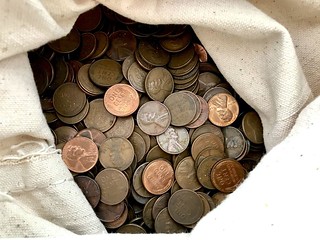 Scratch, an illustrated column about money that runs in the Sunday New York Times, last week addressed a subject close to my heart: coin collecting.
Scratch, an illustrated column about money that runs in the Sunday New York Times, last week addressed a subject close to my heart: coin collecting.
My daughter Lucy brought the column to my attention. She follows Julia Rothman, its illustrator, and was familiar with my childhood interest in coins.
Ms. Rothman initially reached out to millennial and Gen Z members for a story about stamp collecting but was informed the hobby was on life support. I could have told her that.
HOW TRUMP COINS BECAME INTERNET SENSATION
Arthur Shippee and Mel Wacks passed along this New York Times story on how those Trump Coins came to dominate the Internet ad space. It's an interesting detective story and lesson in online marketing. Here's an excerpt - see the complete article online. -Editor
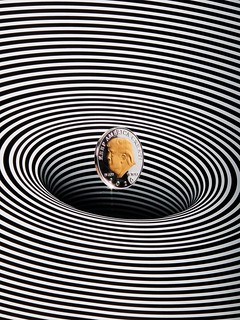 The novelty coins are simple, glistening tokens of admiration for former President Donald J. Trump. They're also one of the hottest products going.
The novelty coins are simple, glistening tokens of admiration for former President Donald J. Trump. They're also one of the hottest products going.
There's a style for every taste, each featuring a portrait of Mr. Trump. Sometimes he's rendered in gold, staring thoughtfully into the distance. In others he's smirking in silver, raising a thumb's up, or even riding a missile while a bald eagle soars behind him.
Among all the options, one version stands out. Known online as simply the Trump coin,
it has become a favorite of right-wing social media and fringe news sites. It's advertised between claims of stolen elections or conspiracy theories about global cabals. Some ads even describe the coin as a kind of cryptocurrency, suggesting it would soon be worth thousands.
LOOSE CHANGE: JANUARY 30, 2022
Here are some additional items in the media this week that may be of interest. -Editor
Fifteen year old Canadian Jaireet Chahal collects King George VI specimen coinage of all denominations. He was highlighted this week in a Canadian Coin News article. -Editor
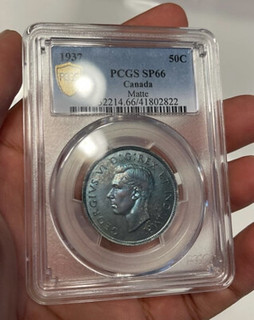 Jaireet started collecting coins because it
Jaireet started collecting coins because it seemed like an attractive idea.
Jaireet stayed with numismatics as a hobby because of the amazing friends and connections made through Instagram and other social media platforms.
Jaireet is a great example of younger generations modernizing numismatics and collecting in the digital realm.
To read the complete article, see:
Young Collector Highlight: Jaireet
(https://canadiancoinnews.com/young-collector-highlight-jaireet/)
To read a related earlier E-Sylum article, see:
NYT FEATURES MILLENNIAL AND GEN Z COLLECTORS
(https://www.coinbooks.org/v25/esylum_v25n04a24.html)
Other topics this week include first coin books, and the woman who ate $550. -Editor
FEATURED WEB SITE: WORLDWIDE BI-METALLIC COLLECTORS CLUB
This week's Featured Web Site is the Worldwide Bi-Metallic Collectors Club.
The Worldwide Bi-Metallic Collectors Club (WBCC) is the Internet gathering place for collectors interested in Bi-Metallic and Tri-metallic Coins, Medals, Tokens, Encased Coins, Ecus and Euros. Founded September 14th, 1996, the WBCC was the very first Internet Coin Club.
This site has become the largest online source for bi-metallic coin information and includes an extensive Image Library, as well as, production information. You're welcome to come in and have a look around.

